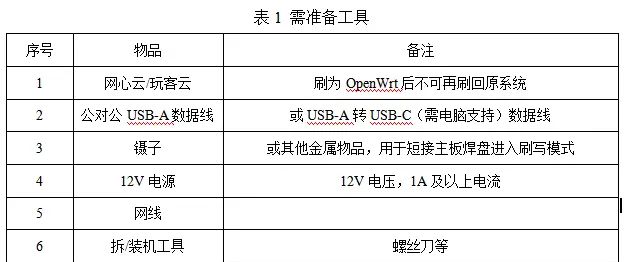个人ACM模板总结(JAVA版)(四)
感谢AcWing – 快乐学习生活,尽在AcWing Acwing这个算法平台。
学习自Acwing + 大佬(青衫白衣98)+ 自己总结
七、其他
(一)排序
1.快速排序
public class QuickSort {
public static void quickSort(int[] arr, int l, int r) {
if (l >= r) return;
int x = arr[(l + r) / 2];
int i = l - 1, j = r + 1;
while (i < j) {
do i++; while (arr[i] < x);
do j--; while (arr[j] > x);
if (i < j) {
swap(arr, i, j);
}
}
quickSort(arr, l, j);
quickSort(arr, j + 1, r);
}
private static void swap(int[] arr, int i, int j) {
int tmp = arr[i];
arr[i] = arr[j];
arr[j] = tmp;
}
public static void main(String[] args) {
int[] a = {
5, 3, 8, 4, 2};
quickSort(a, 0, a.length - 1);
System.out.println(Arrays.toString(a));
}
}
2.归并排序
public class MergeSort {
private static int[] tmp;
public static void mergeSort(int[] arr, int l, int r) {
if (l >= r) return;
int m = (l + r) / 2;
mergeSort(arr, l, m);
mergeSort(arr, m + 1, r);
tmp = new int[r - l + 1];
int i = l, j = m + 1, k = 0;
while (i <= m && j <= r) {
if (arr[i] <= arr[j]) {
tmp[k++] = arr[i++];
} else {
tmp[k++] = arr[j++];
}
}
while (i <= m) tmp[k++] = arr[i++];
while (j <= r) tmp[k++] = arr[j++];
for (int p = 0; p < tmp.length; p++) {
arr[l + p] = tmp[p];
}
}
public static void main(String[] args) {
int[] a = {
5, 3, 8, 4, 2};
mergeSort(a, 0, a.length - 1);
System.out.println(Arrays.toString(a));
}
}
3.归并排序求逆序对
public class InversionCount {
private static int[] tmp;
public static long mergeSort(int[] arr, int l, int r) {
if (l >= r) return 0;
int mid = (l + r) / 2;
long res = mergeSort(arr, l, mid) + mergeSort(arr, mid + 1, r);
tmp = new int[r - l + 1];
int i = l, j = mid + 1, k = 0;
while (i <= mid && j <= r) {
if (arr[i] <= arr[j]) {
tmp[k++] = arr[i++];
} else {
tmp[k++] = arr[j++];
res += mid - i + 1;
}
}
while (i <= mid) tmp[k++] = arr[i++];
while (j <= r) tmp[k++] = arr[j++];
for (int p = 0; p < tmp.length; p++) {
arr[p + l] = tmp[p];
}
return res;
}
public static void main(String[] args) {
int[] a = {
3, 1, 2, 4, 5};
System.out.println("逆序对数量:" + mergeSort(a, 0, a.length - 1));
}
}
(二)二分
1.整数二分
public class BinarySearch {
// 区间 [l, r] 被划分为 [l, mid] 和 [mid+1, r]
public static int binarySearch1(int[] arr, int target) {
int l = 0, r = arr.length - 1;
while (l < r) {
int mid = (l + r) / 2;
if (arr[mid] >= target) {
r = mid;
} else {
l = mid + 1;
}
}
return l;
}
// 区间 [l, r] 被划分为 [l, mid-1] 和 [mid, r]
public static int binarySearch2(int[] arr, int target) {
int l = 0, r = arr.length - 1;
while (l < r) {
int mid = (l + r + 1) / 2;
if (arr[mid] <= target) {
l = mid;
} else {
r = mid - 1;
}
}
return l;
}
}
2.浮点数二分
public class FloatBinarySearch {
public static double binarySearch(double l, double r) {
for (int i = 0; i < 100; i++) {
double mid = (l + r) / 2;
if (check(mid)) {
r = mid;
} else {
l = mid;
}
}
return l;
}
// 示例 check 函数:找 sqrt(2)
public static boolean check(double x) {
return x * x >= 2.0;
}
public static void main(String[] args) {
System.out.println(binarySearch(1, 2)); // 输出近似值 1.414...
}
}
(三)快速幂和龟速乘
1. 龟速乘法(防止溢出的大数相乘)
public class SlowMultiply {
public static long multiply(long a, long b, long mod) {
long res = 0;
while (b > 0) {
if ((b & 1) == 1) {
res = (res + a) % mod;
}
a = (a + a) % mod;
b >>= 1;
}
return res;
}
}
2. 快速幂(模幂运算)
public class FastPower {
public static long power(long base, long exp, long mod) {
long ans = 1;
while (exp != 0) {
if ((exp & 1) == 1) {
ans = ans * base % mod;
}
base = base * base % mod;
exp >>= 1;
}
return ans;
}
}
(四)快读
import java.io.*;
public class FastReader {
private static BufferedReader reader;
private static StringTokenizer tokenizer;
public static void init() {
reader = new BufferedReader(new InputStreamReader(System.in));
}
public static String next() throws IOException {
while (tokenizer == null || !tokenizer.hasMoreTokens()) {
String line = reader.readLine();
if (line == null) throw new IOException("No more input");
tokenizer = new StringTokenizer(line);
}
return tokenizer.nextToken();
}
public static int nextInt() throws IOException {
return Integer.parseInt(next());
}
public static long nextLong() throws IOException {
return Long.parseLong(next());
}
public static double nextDouble() throws IOException {
return Double.parseDouble(next());
}
public static void main(String[] args) throws IOException {
init();
int n = nextInt();
System.out.println(n);
}
}
(五)高精度
_int128 a;//可以防止爆longlong,注意两个
1.大数相加:
import java.util.*;
public class HighPrecisionAddition {
public static List<Integer> add(List<Integer> A, List<Integer> B) {
List<Integer> C = new ArrayList<>();
int t = 0; // 进位
for (int i = 0; i < A.size() || i < B.size(); i++) {
if (i < A.size()) t += A.get(i);
if (i < B.size()) t += B.get(i);
C.add(t % 10);
t /= 10;
}
if (t > 0) C.add(t);
return C;
}
public static void main(String[] args) {
Scanner sc = new Scanner(System.in);
String s1 = sc.next();
String s2 = sc.next();
List<Integer> A = new ArrayList<>();
List<Integer> B = new ArrayList<>();
for (int i = s1.length() - 1; i >= 0; i--) A.add(s1.charAt(i) - '0');
for (int i = s2.length() - 1; i >= 0; i--) B.add(s2.charAt(i) - '0');
List<Integer> C = add(A, B);
for (int i = C.size() - 1; i >= 0; i--) {
System.out.print(C.get(i));
}
}
}
2.高精度减:
import java.util.*;
public class HighPrecisionSubtraction {
public static boolean cmp(List<Integer> A, List<Integer> B) {
if (A.size() != B.size()) return A.size() > B.size();
for (int i = A.size() - 1; i >= 0; i--)
if (!A.get(i).equals(B.get(i))) return A.get(i) > B.get(i);
return true;
}
public static List<Integer> sub(List<Integer> A, List<Integer> B) {
List<Integer> C = new ArrayList<>();
int t = 0;
for (int i = 0; i < A.size(); i++) {
t = A.get(i) - t;
if (i < B.size()) t -= B.get(i);
C.add((t + 10) % 10);
t = t < 0 ? 1 : 0;
}
while (C.size() > 1 && C.get(C.size() - 1) == 0)
C.remove(C.size() - 1);
return C;
}
public static void main(String[] args) {
Scanner sc = new Scanner(System.in);
String s1 = sc.next();
String s2 = sc.next();
List<Integer> A = new ArrayList<>();
List<Integer> B = new ArrayList<>();
for (int i = s1.length() - 1; i >= 0; i--) A.add(s1.charAt(i) - '0');
for (int i = s2.length() - 1; i >= 0; i--) B.add(s2.charAt(i) - '0');
if (cmp(A, B)) {
List<Integer> C = sub(A, B);
for (int i = C.size() - 1; i >= 0; i--) System.out.print(C.get(i));
} else {
List<Integer> C = sub(B, A);
System.out.print("-");
for (int i = C.size() - 1; i >= 0; i--) System.out.print(C.get(i));
}
}
}
3.高精度除低精度:(返回商和余数)
import java.util.*;
public class HighPrecisionDivision {
public static class Result {
List<Integer> quotient;
int remainder;
public Result(List<Integer> q, int r) {
quotient = q;
remainder = r;
}
}
public static Result divide(List<Integer> A, int b) {
List<Integer> C = new ArrayList<>();
int r = 0;
for (int i = A.size() - 1; i >= 0; i--) {
r = r * 10 + A.get(i);
C.add(r / b);
r %= b;
}
Collections.reverse(C);
while (C.size() > 1 && C.get(0) == 0) C.remove(0);
return new Result(C, r);
}
public static void main(String[] args) {
Scanner sc = new Scanner(System.in);
String s1 = sc.next();
int b = sc.nextInt();
List<Integer> A = new ArrayList<>();
for (int i = s1.length() - 1; i >= 0; i--) A.add(s1.charAt(i) - '0');
Result res = divide(A, b);
for (int digit : res.quotient) System.out.print(digit);
System.out.println("
余数:" + res.remainder);
}
}
4.高精度乘低精度
import java.util.*;
public class HighPrecisionMultiplicationLow {
public static List<Integer> multiply(List<Integer> A, int b) {
List<Integer> C = new ArrayList<>();
int t = 0;
for (int digit : A) {
t += digit * b;
C.add(t % 10);
t /= 10;
}
while (t > 0) {
C.add(t % 10);
t /= 10;
}
while (C.size() > 1 && C.get(C.size() - 1) == 0) C.remove(C.size() - 1);
return C;
}
public static void main(String[] args) {
Scanner sc = new Scanner(System.in);
String s1 = sc.next();
int b = sc.nextInt();
List<Integer> A = new ArrayList<>();
for (int i = s1.length() - 1; i >= 0; i--) A.add(s1.charAt(i) - '0');
List<Integer> C = multiply(A, b);
for (int i = C.size() - 1; i >= 0; i--) System.out.print(C.get(i));
}
}
5.高精度乘高精度
import java.util.*;
public class HighPrecisionMultiplicationHigh {
public static String multiply(String s1, String s2) {
int len1 = s1.length();
int len2 = s2.length();
int[] result = new int[len1 + len2];
for (int i = 0; i < len1; i++) {
for (int j = 0; j < len2; j++) {
result[i + j] += (s1.charAt(i) - '0') * (s2.charAt(j) - '0');
}
}
StringBuilder sb = new StringBuilder();
int carry = 0;
for (int i = 0; i < len1 + len2; i++) {
int sum = carry + result[i];
sb.append(sum % 10);
carry = sum / 10;
}
while (sb.length() > 1 && sb.charAt(sb.length() - 1) == '0')
sb.deleteCharAt(sb.length() - 1);
return sb.reverse().toString();
}
public static void main(String[] args) {
Scanner sc = new Scanner(System.in);
String a = sc.next();
String b = sc.next();
System.out.println(multiply(a, b));
}
}
补充:
如需更高效的高精度运算,可使用 BigInteger 类,例如:
import java.math.BigInteger;
public class BigIntegerExample {
public static void main(String[] args) {
Scanner sc = new Scanner(System.in);
BigInteger a = sc.nextBigInteger();
BigInteger b = sc.nextBigInteger();
System.out.println("加法: " + a.add(b));
System.out.println("减法: " + a.subtract(b));
System.out.println("乘法: " + a.multiply(b));
System.out.println("除法: " + a.divide(b));
}
}
不过在竞赛中,手动实现更可控,也更有助于理解底层逻辑。
八、Java高精度
(一)java参考代码:
参考一:
//import java.util.Scanner;//相当于输入输出头文件
import java.util.*;//啥都有头文件
//import java.math.BigInteger;//大数类
import java.math.BigDecimal;//大浮点数
import java.math.*;//关于数学的头文件
public class Main {
public static void main(String[] args) {
BigInteger[] sum=new BigInteger[105];//开一个数组
Scanner cin = new Scanner(System.in);//必须要写这句话(输入)
int t = cin.nextInt();//输入整数T nextInt() 下一个int型数据
// while(cin.hasNext()) {//循环输入,hasNext()
// int n = cin.nextInt();
// }
while (t--!=0) {
//java里不能直接写while(t--),必须是只有真假的表达式
BigInteger a = cin.nextBigInteger();//输入下一个大数
BigInteger b = cin.nextBigInteger();//输入下一个大数
BigInteger c;
c = a.add(b);//c=a+b
c = a.subtract(b);//c=a-b
c = a.multiply(b);//c=a*b
c = a.divide(b);//c=a/b(整数除法)
c = a.remainder(b);//c=a%b
c = a.mod(b);//c=a%b(结果为正数)
c = BigInteger.ZERO;//c=0
c = BigInteger.ONE;//c=1
c = BigInteger.TEN;//c=10 java大数中只有0,1,10
c = BigInteger.valueOf(7);//c=7
int n = 7;
c = BigInteger.valueOf(n);//c=n
c = a.pow(n);//幂运算 c=pow(a,n)
c = a.gcd(b);//最大公约数 c=gcd(a,b)
c = a.abs();//
c = a.max(b);//c=max(a,b)
c = a.min(b);//c=min(a,b)
n = a.compareTo(b);//a<b n=-1;a=b n=0;a>b n=1
a.equals(b);//a==b
a.isProbablePrime(2);//判断素数,有一定几率错误,最好手写
System.out.println(c);//输出c并换行
System.out.print(c);//输出c
System.out.println(a+" "+b);//输出a空格b
BigDecimal d = cin.nextBigDecimal();//输入下一个高精度浮点数
BigDecimal e = cin.nextBigDecimal();//输入下一个高精度浮点数
BigDecimal f = d.add(e);//f=d+e
//...其他和大数类似
f = d.setScale(2);//保留2位小数,默认四舍五入
f = d.setScale(2,BigDecimal.ROUND_DOWN);//保留2位小数,向下取整
f = d.setScale(2,BigDecimal.ROUND_UP);//保留2位小数,向上取整
f = d.setScale(2,BigDecimal.ROUND_HALF_DOWN);//保留2位小数,四舍五入,正好.5舍去
f = d.setScale(2,BigDecimal.ROUND_HALF_UP);//保留2位小数,四舍五入,正好.5进位
}
}
}
参考二:
import java.util.*;
import java.io.BufferedInputStream;
import java.math.*;
public class Main {
static int N = 2005;
static BigInteger mod = new BigInteger("1000000007");
static int n;
static BigInteger[] a = new BigInteger[N];
static BigInteger[] dp = new BigInteger[N];
public static void main(String args[]) {
Scanner cin = new Scanner(System.in);
int T;
BigInteger a = new BigInteger("123456789") ; // 声明BigInteger对象
BigInteger b = new BigInteger("987654321") ; // 声明BigInteger对象
System.out.println("加法操作:" + b.add(a)) ; // 加法操作
System.out.println("减法操作:" + b.subtract(a)) ; // 减法操作
System.out.println("乘法操作:" + b.multiply(a)) ; // 乘法操作
System.out.println("除法操作:" + b.divide(a)) ; // 除法操作
System.out.println("最大数:" + b.max(a)) ; // 求出最大数
System.out.println("最小数:" + b.min(a)) ; // 求出最小数
System.out.println("商:"+b.divide(a));//求商
System.out.println("余数"+b.mod(a));//求余数
BigInteger result[] = b.divideAndRemainder(a) ; // 求出余数的除法操作
System.out.println("商是:" + result[0] +
";余数是:" + result[1]) ;
//比较函数
if( a.compareTo(b) == 0 ) System.out.println("a == b"); //大整数a==b
else if( a.compareTo(b) > 0 ) System.out.println("a > b"); //大整数a>b
else if( a.compareTo(b) < 0 ) System.out.println("a < b"); //大整数a<b
int n;
BigInteger m;
n=cin.nextInt(); //读入一个int;
m=cin.nextBigInteger();//读入一个BigInteger;
m=BigInteger.valueOf(n);//将n转换成大整数
}
}
import java.math.BigInteger;
import java.util.Scanner;
public class Main {
public static void main(String args[]) {
// read
Scanner in = new Scanner(System.in);
BigInteger a = in.nextBigInteger();
// 3 special numbers
a = BigInteger.ZERO;
a = BigInteger.ONE;
a = BigInteger.TEN;
// convert an int to BigInteger
BigInteger b = BigInteger.valueOf(2333);
BigInteger p = BigInteger.valueOf(998244353);
// convert a BigInteger to int
int i = b.intValue();
// convert a BigInteger to long
long l = b.longValue();
// operations:
// a + b; BigInteger add(BigInteger b);
a.add(b);
// a - b; BigInteger subtract(BigInteger b);
a.subtract(b);
// a * b; BigInteger multiply(BigInteger b);
a.multiply(b);
// a / b; BigInteger divide(BigInteger b);
a.divide(b);
// a % b; BigInteger mod(BigInteger b);
a.mod(b);
// -a; BigInteger negate();
a.negate();
// a < 0 ? -1 : (a > 0 ? 1 : 0); int signum();
a.signum();
// signum(a - b); int compareTo(BigInteger b);
a.compareTo(b);
// a == b; boolean equals(BigInteger b);
a.equals(b);
// abs(a); BigInteger abs();
a.abs();
// max(a, b); BigInteger max(BigInteger b);
a.max(b);
// min(a, b); BigInteger min(BigInteger b);
a.min(b);
// gcd(a, b); BigInteger gcd(BigInteger b);
a.gcd(b);
// pow(a, i); BigInteger pow(int i);
a.pow(i);
// modPow(a, b, p); BigInteger modPow(BigInteger b, BigInteger p);
a.modPow(b, p);
// modPow(a, p - 2, p); BigInteger modInverse(BigInteger p);
a.modInverse(p);
// isPrime(a); (probability:1 - 0.5^i) boolean isProbablePrime(int certainty);
a.isProbablePrime(i);
// a << i; BigInteger shiftLeft(int i);
a.shiftLeft(i);
// a >> i; BigInteger shiftRight(int i);
a.shiftRight(i);
// a ^ b; BigInteger xor(BigInteger b);
a.xor(b);
// a | b; BigInteger or(BigInteger b);
a.or(b);
// a & b; BigInteger and(BigInteger b);
a.and(b);
// ~a; BigInteger not();
a.not();
// a & ~b; BigInteger andNot(BigInteger b);
a.andNot(b);
// ((a >> i) & 1) == 1; BigInteger testBit(int i);
a.testBit(i);
// a | (1 << i); BigInteger setBit(int i);
a.setBit(i);
// a & ~(1 << i); BigInteger clearBit(int i);
a.clearBit(i);
// a ^ (1 << i); BigInteger flipBit(int i);
a.flipBit(i);
// a & -a; BigInteger getLowerSetBit();
a.getLowestSetBit();
// __builtin_popcount(a); int bitCount();
a.bitCount();
// ceil(log2(this < 0 ? -this : this+1)) int bitLength();
a.bitLength();
}
}
Java过题代码:
import java.math.BigInteger;
import java.util.Scanner;
public class Main {
static int mod = 1000;
static int N = 10005;
static BigInteger[][] f = new BigInteger[1005][105];
static BigInteger Cnm(int n,int m) {
for(int i = 0;i<=n;i++) {
f[i][0] = new BigInteger("1");
}
for(int i = 1;i<=n;i++) {
for(int j = 1;j<=m && j<=i;j++) {
if(i == j) f[i][j] = new BigInteger("1");
else {
f[i][j] = new BigInteger("0");
f[i][j] = f[i-1][j].add(f[i-1][j-1]);
}
}
}
return f[n][m];
}
static int qmi(int a,int b) {
int res = 1;
while(b!=0) {
if(b%2 == 1) res = (int) ((long)res*a%mod);
a = (int) ((long)a*a%mod);
b = b/2;
}
return res;
}
public static void main(String[] args) {
int x,k;
Scanner cin = new Scanner(System.in);
k = cin.nextInt();
x = cin.nextInt();
x = qmi(x,x);
System.out.println(Cnm(x-1,k-1));
}
}
(二)Java快速读入输出模板
import java.io.*;
import java.util.*;
public class Main {
public static void main(String[] args) {
InputStream inputStream = System.in;
OutputStream outputStream = System.out;
InputReader in = new InputReader(inputStream);
PrintWriter out = new PrintWriter(outputStream);
Solver solver = new Solver();
solver.solve(in, out);
out.close();
}
static class Solver {
public void solve(InputReader in, PrintWriter out) {
//写执行代码
}
}
static class InputReader {
public BufferedReader reader;
public StringTokenizer tokenizer;
public InputReader(InputStream stream) {
reader = new BufferedReader(new InputStreamReader(stream), 32768);
tokenizer = null;
}
public String next() {
while (tokenizer == null || !tokenizer.hasMoreTokens()) {
try {
tokenizer = new StringTokenizer(reader.readLine());
} catch (IOException e) {
throw new RuntimeException(e);
}
}
return tokenizer.nextToken();
}
public int nextInt() {
return Integer.parseInt(next());
}
public long nextLong() {
return Long.parseLong(next());
}
}
}
九、计算几何
(一)基本模板:
参考算法竞赛从入门到进阶
#include <bits/stdc++.h>
using namespace std;
const double pi = acos(-1.0); //高精度圆周率
const double eps = 1e-8; //偏差值
const int maxp = 1010; //点的数量
int sgn(double x){
//判断x是否等于0
if(fabs(x) < eps) return 0;
else return x<0?-1:1;
}
int Dcmp(double x, double y){
//比较两个浮点数:0 相等;-1 小于;1 大于
if(fabs(x - y) < eps) return 0;
else return x<y ?-1:1;
}
//---------------平面几何:点和线--------
struct Point{
//定义点和基本运算
double x,y;
Point(){
}
Point(double x,double y):x(x),y(y){
}
Point operator + (Point B){
return Point(x+B.x,y+B.y);}
Point operator - (Point B){
return Point(x-B.x,y-B.y);}
Point operator * (double k){
return Point(x*k,y*k);} //长度增大k倍
Point operator / (double k){
return Point(x/k,y/k);} //长度缩小k倍
bool operator == (Point B){
return sgn(x-B.x)==0 && sgn(y-B.y)==0;}
bool operator < (Point B){
return sgn(x-B.x)<0 || (sgn(x-B.x)==0 && sgn(y-B.y)<0);} //用于凸包
};
typedef Point Vector; //定义向量
//点积
double Dot(Vector A,Vector B){
return A.x*B.x + A.y*B.y;}
//向量的长度
double Len(Vector A){
return sqrt(Dot(A,A));}
//向量长度的平方
double Len2(Vector A){
return Dot(A,A);}
//求向量A和B的夹角
double Angle(Vector A,Vector B){
return acos(Dot(A,B)/Len(A)/Len(B));}
//叉积,大于0则B在A的逆时针方向;小于0则B在A的顺时针方向;等于0则B与A共线,可能是同方向的,也可能是反方向的
double Cross(Vector A,Vector B){
return A.x*B.y - A.y*B.x;}
//三角形ABC面积的2倍
double Area2(Point A, Point B, Point C){
return Cross(B-A, C-A);}
//两点的距离,方法一
double Distance(Point A, Point B){
return hypot(A.x-B.x,A.y-B.y);}
//两点的距离,方法二
double Dist(Point A,Point B){
return sqrt((A.x-B.x)*(A.x-B.x) + (A.y-B.y)*(A.y-B.y));}
//向量A的单位法向量
Vector Normal(Vector A){
return Vector(-A.y/ Len(A), A.x/ Len(A));}
bool Parallel(Vector A, Vector B){
return sgn(Cross(A,B)) == 0;}//向量平行或重合
//向量A逆时针旋转rad度
Vector Rotate(Vector A, double rad){
return Vector(A.x*cos(rad)-A.y*sin(rad), A.x*sin(rad)+A.y*cos(rad));
}
struct Line{
Point p1,p2;//线上的两个点
Line(){
}
Line(Point p1,Point p2):p1(p1),p2(p2){
}
// Line(Point x,Point y){p1 = x;p2 = y;}
// Point(double x,double y):x(x),y(y){}
//根据一个点和倾斜角 angle 确定直线,0<=angle<pi
Line(Point p,double angle){
p1 = p;
if(sgn(angle - pi/2) == 0){
p2 = (p1 + Point(0,1));}
else{
p2 = (p1 + Point(1,tan(angle)));}
}
//ax+by+c=0
Line(double a,double b,double c){
if(sgn(a) == 0){
p1 = Point(0,-c/b);
p2 = Point(1,-c/b);
}
else if(sgn(b) == 0){
p1 = Point(-c/a,0);
p2 = Point(-c/a,1);
}
else{
p1 = Point(0,-c/b);
p2 = Point(1,(-c-a)/b);
}
}
};
typedef Line Segment; //定义线段,两端点是Point p1,p2
//返回直线倾斜角 0<=angle<pi
double Line_angle(Line v){
double k = atan2(v.p2.y-v.p1.y, v.p2.x-v.p1.x);
if(sgn(k) < 0)k += pi;
if(sgn(k-pi) == 0)k -= pi;
return k;
}
//点和直线关系:1 在左侧;2 在右侧;0 在直线上
int Point_line_relation(Point p,Line v){
int c = sgn(Cross(p-v.p1,v.p2-v.p1));
if(c < 0)return 1; //1:p在v的左边
if(c > 0)return 2; //2:p在v的右边
return 0; //0:p在v上
}
// 点和线段的关系:0 点p不在线段v上;1 点p在线段v上。
bool Point_on_seg(Point p, Line v){
return sgn(Cross(p-v.p1, v.p2-v.p1)) == 0 && sgn(Dot(p - v.p1,p- v.p2)) <= 0;
}
//两直线关系:0 平行,1 重合,2 相交
int Line_relation(Line v1, Line v2){
if(sgn(Cross(v1.p2-v1.p1,v2.p2-v2.p1)) == 0){
if(Point_line_relation(v1.p1,v2)==0) return 1;//1 重合
else return 0;//0 平行
}
return 2; //2 相交
}
//点到直线的距离
double Dis_point_line(Point p, Line v){
return fabs(Cross(p-v.p1,v.p2-v.p1))/Distance(v.p1,v.p2);
}
//求在直线上的投影点
Point Point_line_proj(Point p, Line v){
double k=Dot(v.p2-v.p1,p-v.p1)/Len2(v.p2-v.p1);
return v.p1+(v.p2-v.p1)*k;
}
//点p对直线v的对称点
Point Point_line_symmetry(Point p, Line v){
Point q = Point_line_proj(p,v);//先求点p在直线v的投影点
return Point(2*q.x-p.x,2*q.y-p.y);
}
//点到线段的距离
double Dis_point_seg(Point p, Segment v){
if(sgn(Dot(p- v.p1,v.p2-v.p1))<0 || sgn(Dot(p- v.p2,v.p1-v.p2))<0) //点的投影不在线段上
return min(Distance(p,v.p1),Distance(p,v.p2));//到两端点的距离取最小值
return Dis_point_line(p,v); //点的投影在线段上
}
//求两直线ab和cd的交点
//**调用前要保证两直线不平行或重合,先判断两直线是否平行
Point Cross_point(Point a,Point b,Point c,Point d){
//Line1:ab, Line2:cd
double s1 = Cross(b-a,c-a);
double s2 = Cross(b-a,d-a); //叉积有正负
return Point(c.x*s2-d.x*s1,c.y*s2-d.y*s1)/(s2-s1);
}
//两线段是否相交:1 相交,0不相交
//如果求两线段交点,先判断两线段是否相交,相交则转化成两直线求交点
bool Cross_segment(Point a,Point b,Point c,Point d){
//Line1:ab, Line2:cd
double c1=Cross(b-a,c-a),c2=Cross(b-a,d-a);
double d1=Cross(d-c,a-c),d2=Cross(d-c,b-c);
return sgn(c1)*sgn(c2)<0 && sgn(d1)*sgn(d2)<0;//注意交点是端点的情况不算在内
}
//---------------平面几何:多边形----------------
struct Polygon{
int n; //多边形的顶点数
Point p[maxp]; //多边形的点
Line v[maxp]; //多边形的边
};
//判断点和任意多边形的关系: 3 点上; 2 边上; 1 内部; 0 外部
//点pt,多边形的点Point *p,多边形点的数量n,多边形顶点按照顺时针或者逆时针方向排列
int Point_in_polygon(Point pt,Point *p,int n){
for(int i = 0;i < n;i++){
//点在多边形的顶点上,下标从0开始
if(p[i] == pt)return 3;
}
for(int i = 0;i < n;i++){
//点在多边形的边上
Line v=Line(p[i],p[(i+1)%n]);
if(Point_on_seg(pt,v)) return 2;
}
int num = 0;
for(int i = 0;i < n;i++){
int j = (i+1)% n;
int c = sgn(Cross(pt-p[j],p[i]-p[j]));
int u = sgn(p[i].y - pt.y);
int v = sgn(p[j].y - pt.y);
if(c > 0 && u < 0 && v >=0) num++;
if(c < 0 && u >=0 && v < 0) num--;
}
return num != 0; //1 内部; 0 外部
}
//求多边形的面积,从原点开始划分三角形,顶点按照顺时针或者逆时针方向排列
double Polygon_area(Point *p, int n){
//Point *p表示多边形。
double area = 0;
for(int i = 0;i < n;i++)
area += Cross(p[i],p[(i+1)%n]);
return area/2; //面积有正负,不能简单地取绝对值
}
//求多边形重心。Point *p表示多边形。
Point Polygon_center(Point *p, int n){
Point ans(0,0);
if(Polygon_area(p,n)==0) return ans;
for(int i = 0;i < n;i++)
ans = ans + (p[i]+p[(i+1)%n]) * Cross(p[i],p[(i+1)%n]); //面积有正负
return ans/Polygon_area(p,n)/6.;
}
//Convex_hull()求凸包。凸包顶点放在ch中,返回值是凸包的顶点数
int Convex_hull(Point *p,int n,Point *ch){
sort(p,p+n); //对点排序:按x从小到大排序,如果x相同,按y排序
n=unique(p,p+n)-p; //去除重复点
int v=0;
//求下凸包。如果p[i]是右拐弯的,这个点不在凸包上,往回退
for(int i=0;i<n;i++){
while(v>1 && sgn(Cross(ch[v-1]-ch[v-2],p[i]-ch[v-2]))<=0)
v--;
ch[v++]=p[i];
}
int j=v;
//求上凸包
for(int i=n-2;i>=0;i--){
while(v>j && sgn(Cross(ch[v-1]-ch[v-2],p[i]-ch[v-2]))<=0)
v--;
ch[v++]=p[i];
}
if(n>1) v--;
return v; //返回值v是凸包的顶点数
}
//---------------平面几何:圆----------------
struct Circle{
Point c;//圆心
double r;//半径
Circle(){
}
Circle(Point c,double r):c(c),r(r){
}
Circle(double x,double y,double _r){
c=Point(x,y);r = _r;}
};
//点和圆的关系: 0 点在圆内, 1 圆上, 2 圆外.
int Point_circle_relation(Point p, Circle C){
double dst = Distance(p,C.c);
if(sgn(dst - C.r) < 0) return 0; //点在圆内
if(sgn(dst - C.r) ==0) return 1; //圆上
return 2; //圆外
}
//直线和圆的关系:0 直线在圆内, 1 直线和圆相切, 2 直线在圆外
int Line_circle_relation(Line v,Circle C){
double dst = Dis_point_line(C.c,v);
if(sgn(dst-C.r) < 0) return 0; //直线在圆内
if(sgn(dst-C.r) ==0) return 1; //直线和圆相切
return 2; //直线在圆外
}
//线段和圆的关系:0 线段在圆内, 1 线段和圆相切, 2 线段在圆外
int Seg_circle_relation(Segment v,Circle C){
double dst = Dis_point_seg(C.c,v);
if(sgn(dst-C.r) < 0) return 0; //线段在圆内
if(sgn(dst-C.r) ==0) return 1; //线段和圆相切
return 2; //线段在圆外
}
//直线和圆的交点,pa, pb是交点。返回值是交点个数
int Line_cross_circle(Line v,Circle C,Point &pa,Point &pb){
if(Line_circle_relation(v, C)==2) return 0;//无交点
Point q = Point_line_proj(C.c,v); //圆心在直线上的投影点
double d = Dis_point_line(C.c,v); //圆心到直线的距离
double k = sqrt(C.r*C.r-d*d); //
if(sgn(k) == 0){
//1个交点,直线和圆相切
pa = q;
pb = q;
return 1;
}
Point n=(v.p2-v.p1)/ Len(v.p2-v.p1); //单位向量
pa = q + n*k;
pb = q - n*k;
return 2;//2个交点
}
//-------------------三维几何----------------
//三维:点
struct Point3{
double x,y,z;
Point3(){
}
Point3(double x,double y,double z):x(x),y(y),z(z){
}
Point3 operator + (Point3 B){
return Point3(x+B.x,y+B.y,z+B.z);}
Point3 operator - (Point3 B){
return Point3(x-B.x,y-B.y,z-B.z);}
Point3 operator * (double k){
return Point3(x*k,y*k,z*k);}
Point3 operator / (double k){
return Point3(x/k,y/k,z/k);}
bool operator == (Point3 B){
return sgn(x-B.x)==0 && sgn(y-B.y)==0 && sgn(z-B.z)==0;}
};
typedef Point3 Vector3;
//点积。和二维点积函数同名。C++允许函数同名。
double Dot(Vector3 A,Vector3 B){
return A.x*B.x+A.y*B.y+A.z*B.z;}
//叉积
Vector3 Cross(Vector3 A,Vector3 B){
return Point3(A.y*B.z-A.z*B.y,A.z*B.x-A.x*B.z,A.x*B.y-A.y*B.x);}
double Len(Vector3 A){
return sqrt(Dot(A,A));} //向量的长度
double Len2(Vector3 A){
return Dot(A,A);} //向量长度的平方
double Distance(Point3 A,Point3 B){
return sqrt((A.x-B.x)*(A.x-B.x)+(A.y-B.y)*(A.y-B.y)+(A.z-B.z)*(A.z-B.z));
}
double Angle(Vector3 A,Vector3 B){
return acos(Dot(A,B)/Len(A)/Len(B));} //A与B的夹角
//三维:线
struct Line3{
Point3 p1,p2;
Line3(){
}
Line3(Point3 p1,Point3 p2):p1(p1),p2(p2){
}
};
typedef Line3 Segment3; //定义线段,两端点是Point p1,p2
//三角形面积的2倍
double Area2(Point3 A,Point3 B,Point3 C){
return Len(Cross(B-A, C-A));}
//三维:点到直线距离
double Dis_point_line(Point3 p, Line3 v){
return Len(Cross(v.p2-v.p1,p-v.p1))/Distance(v.p1,v.p2);
}
//三维:点在直线上
bool Point_line_relation(Point3 p,Line3 v){
return sgn( Len(Cross(v.p1-p,v.p2-p))) == 0 && sgn(Dot(v.p1-p,v.p2-p))== 0;
}
//三维:点到线段距离。
double Dis_point_seg(Point3 p, Segment3 v){
if(sgn(Dot(p- v.p1,v.p2-v.p1)) < 0 || sgn(Dot(p- v.p2,v.p1-v.p2)) < 0)
return min(Distance(p,v.p1),Distance(p,v.p2));
return Dis_point_line(p,v);
}
//三维:点 p 在直线上的投影
Point3 Point_line_proj(Point3 p, Line3 v){
double k=Dot(v.p2-v.p1,p-v.p1)/Len2(v.p2-v.p1);
return v.p1+(v.p2-v.p1)*k;
}
//三维:平面
struct Plane{
Point3 p1,p2,p3;//平面上的三个点
Plane(){
}
Plane(Point3 p1,Point3 p2,Point3 p3):p1(p1),p2(p2),p3(p3){
}
};
//平面法向量
Point3 Pvec(Point3 A,Point3 B,Point3 C){
return Cross(B-A,C-A);}
Point3 Pvec(Plane f){
return Cross(f.p2-f.p1,f.p3-f.p1);}
//四点共平面
bool Point_on_plane(Point3 A,Point3 B,Point3 C,Point3 D){
return sgn(Dot(Pvec(A,B,C),D-A)) == 0;
}
//两平面平行
int Parallel(Plane f1, Plane f2){
return Len(Cross(Pvec(f1),Pvec(f2))) < eps;
}
//两平面垂直
int Vertical (Plane f1, Plane f2){
return sgn(Dot(Pvec(f1),Pvec(f2)))==0;
}
//直线与平面的交点p,返回值是交点个数
int Line_cross_plane(Line3 u,Plane f,Point3 &p){
Point3 v = Pvec(f);
double x = Dot(v, u.p2-f.p1);
double y = Dot(v, u.p1-f.p1);
double d = x-y;
if(sgn(x) == 0 && sgn(y) == 0) return -1;//-1:v在f上
if(sgn(d) == 0)return 0; //0:v与f平行
p = ((u.p1 * x)-(u.p2 * y))/d; //v与f相交
return 1;
}
//四面体有向体积*6
double volume4(Point3 A,Point3 B,Point3 C,Point3 D){
return Dot(Cross(B-A,C-A),D-A);}
int main(){
Point a(0,1),b(0,0),c(1,1),d(1,2),p(1.5,1);
double a1=5,b1=6,c1=1;
Line k(a,b),k2(c,d);
Point pr(1,1),cr(1,1); double r=1; Circle C(cr,r);
cout<<endl<<"Line_circle_relation="<<Line_circle_relation(k,C);
cout<<endl<<"Seg_circle_relation="<<Seg_circle_relation(k,C);
cout<<endl<<"Point_circle_relation="<<Point_circle_relation(pr,C);
cout<<endl<<"parallel="<<Parallel(a,b)<<endl;
cout<<"dot="<<Dot(a,b)<<endl<<" angle="<<Angle(a,b)<<endl;
cout<<"90:"<<sgn(Rotate(a, -pi/2).x)<<endl<<Rotate(a, -pi/2).y;
cout<<endl<<"line angle="<<Line_angle(k)*4;
cout<<endl<<"line place="<<Point_line_relation(p,k);
cout<<endl<<"point_on_seg="<<Point_on_seg(p,k);
cout<<endl<<"dis_point_line="<<Dis_point_line(p,k);
cout<<endl<<"dis_point_line="<<Dis_point_seg(p,k);
Point pp=Cross_point(a,b,c,d);
cout<<endl<<"crosspoint="<<pp.x<<" "<<pp.y;
cout<<endl<<"cross seg="<<Cross_segment(a,b,c,d);
cout<<endl<<"distance="<<Distance(a,b);
cout<<endl<<"line_relation="<<Line_relation(k,k2);
Point g[4];
g[0]=a;g[1]=b;g[2]=c;g[3]=d;
cout<<endl<<"Point_in_polygon="<<Point_in_polygon(p,g,4);
cout<<endl<<"Polygon_area="<<Polygon_area(g,4);
cout<<endl<<endl;
return 0;
}
(二)求半平面交
1.点向式求半平面交
import java.util.*;
class Point {
double x, y;
Point() {
}
Point(double x, double y) {
this.x = x;
this.y = y;
}
Point add(Point B) {
return new Point(x + B.x, y + B.y);
}
Point subtract(Point B) {
return new Point(x - B.x, y - B.y);
}
Point multiply(double k) {
return new Point(x * k, y * k);
}
}
class Vector extends Point {
Vector(double x, double y) {
super(x, y);
}
}
class Line {
Point p;
Vector v;
double ang;
Line(Point p, Vector v) {
this.p = p;
this.v = v;
ang = Math.atan2(v.y, v.x);
}
}
public class HalfPlaneIntersectionPointVector {
static final double INF = 1e12;
static final double EPS = 1e-8;
static int sgn(double x) {
if (Math.abs(x) < EPS) return 0;
else return x < 0 ? -1 : 1;
}
static double cross(Vector A, Vector B) {
return A.x * B.y - A.y * B.x;
}
static boolean onLeft(Line L, Point p) {
return sgn(cross(L.v, p.subtract(L.p))) > 0;
}
static Point crossPoint(Line a, Line b) {
Vector u = a.p.subtract(b.p);
double t = cross(b.v, u) / cross(a.v, b.v);
return a.p.add(a.v.multiply(t));
}
static List<Point> HPI(List<Line> L) {
int n = L.size();
L.sort(Comparator.comparingDouble(o -> o.ang));
Deque<Line> q = new ArrayDeque<>();
List<Point> ans = new ArrayList<>();
for (int i = 0; i < n; i++) {
while (q.size() > 1 && !onLeft(L.get(i), crossPoint(q.getLast(), q.get(q.size() - 2)))) q.removeLast();
while (q.size() > 1 && !onLeft(L.get(i), crossPoint(q.getFirst(), q.get(1)))) q.removeFirst();
q.addLast(L.get(i));
if (q.size() > 1)
ans.set(ans.size() - 1, crossPoint(q.getLast(), q.get(q.size() - 2)));
}
while (q.size() > 2 && !onLeft(q.getFirst(), crossPoint(q.getLast(), q.get(q.size() - 2)))) q.removeLast();
if (q.size() <= 2) return new ArrayList<>();
ans.add(crossPoint(q.getLast(), q.getFirst()));
return ans;
}
public static void main(String[] args) {
Scanner sc = new Scanner(System.in);
int T = sc.nextInt();
while (T-- > 0) {
int n = sc.nextInt();
List<Line> L = new ArrayList<>();
L.add(new Line(new Point(0, 0), new Vector(0, -1)));
L.add(new Line(new Point(0, INF), new Vector(-1, 0)));
for (int i = 0; i < n; i++) {
double a = sc.nextDouble(), b = sc.nextDouble();
L.add(new Line(new Point(0, a), new Vector(1, b)));
}
List<Point> ans = HPI(L);
System.out.println(ans.size() - 2);
}
}
}
2.两点式求半平面交一
import java.util.*;
class Point {
double x, y;
Point() {
}
Point(double x, double y) {
this.x = x;
this.y = y;
}
Point add(Point B) {
return new Point(x + B.x, y + B.y);
}
Point subtract(Point B) {
return new Point(x - B.x, y - B.y);
}
Point multiply(double k) {
return new Point(x * k, y * k);
}
Point divide(double k) {
return new Point(x / k, y / k);
}
}
class Line {
Point p1, p2;
Line(Point p1, Point p2) {
this.p1 = p1;
this.p2 = p2;
}
}
public class HalfPlaneIntersectionTwoPoints {
static final double INF = 1e12;
static final double EPS = 1e-8;
static int sgn(double x) {
if (Math.abs(x) < EPS) return 0;
else return x < 0 ? -1 : 1;
}
static double dot(Point A, Point B) {
return A.x * B.x + A.y * B.y;
}
static double dist(Point A, Point B) {
return Math.sqrt((A.x - B.x) * (A.x - B.x) + (A.y - B.y) * (A.y - B.y));
}
static double cross(Point A, Point B) {
return A.x * B.y - A.y * B.x;
}
static double area2(Point A, Point B, Point C) {
return cross(B.subtract(A), C.subtract(A));
}
static double getAngle(Line a) {
return Math.atan2(a.p2.y - a.p1.y, a.p2.x - a.p1.x);
}
static int pointLineRelation(Point p, Line v) {
int c = sgn(cross(p.subtract(v.p1), v.p2.subtract(v.p1)));
if (c < 0) return 1; // p在v的左边
if (c > 0) return 2; // p在v的右边
return 0; // p在v上
}
static Point crossPoint(Point a, Point b, Point c, Point d) {
// Line1:ab, Line2:cd
double s1 = cross(b.subtract(a), c.subtract(a));
double s2 = cross(b.subtract(a), d.subtract(a)); // 叉积有正负
return new Point((c.x * s2 - d.x * s1) / (s2 - s1), (c.y * s2 - d.y * s1) / (s2 - s1));
}
static Point crossPoint(Line a, Line b) {
return crossPoint(a.p1, a.p2, b.p1, b.p2);
}
static boolean onLeft(Line l, Point p) {
return pointLineRelation(p, l) == 1;
}
static List<Point> HPI(List<Line> L) {
int n = L.size();
L.sort(Comparator.comparingDouble(HalfPlaneIntersectionTwoPoints::getAngle).thenComparing(l -> -area2(l.p1, l.p2, new Point(INF, INF))));
Deque<Line> q = new ArrayDeque<>();
List<Point> ans = new ArrayList<>();
for (int i = 0; i < n; i++) {
while (q.size() > 1 && !onLeft(L.get(i), crossPoint(q.getLast(), q.get(q.size() - 2)))) q.removeLast();
while (q.size() > 1 && !onLeft(L.get(i), crossPoint(q.getFirst(), q.get(1)))) q.removeFirst();
q.addLast(L.get(i));
if (q.size() > 1)
ans.set(ans.size() - 1, crossPoint(q.getLast(), q.get(q.size() - 2)));
}
while (q.size() > 2 && !onLeft(q.getFirst(), crossPoint(q.getLast(), q.get(q.size() - 2)))) q.removeLast();
if (q.size() <= 2) return new ArrayList<>();
ans.add(crossPoint(q.getLast(), q.getFirst()));
return ans;
}
public static void main(String[] args) {
Scanner sc = new Scanner(System.in);
int T = sc.nextInt();
while (T-- > 0) {
int n = sc.nextInt();
List<Line> L = new ArrayList<>();
L.add(new Line(new Point(0, 0), new Point(0, -1)));
L.add(new Line(new Point(0, INF), new Point(-1, INF)));
for (int i = 0; i < n; i++) {
double p = sc.nextDouble(), v = sc.nextDouble();
L.add(new Line(new Point(0, p), new Point(1, v + p)));
}
List<Point> ans = HPI(L);
System.out.println(ans.size() - 2);
}
}
}
3.两点式求半平面交模板二
typedef long long ll;
typedef long double LD;
typedef pair<int,int> PII;
const double inf = 1e12;
const int N = 100005;
const LD eps = 1e-18;
int n,m;
int sgn(double x){
//判断x是否等于0
if(fabs(x) < eps) return 0;
else return x<0?-1:1;
}
int Dcmp(double x, double y){
//比较两个浮点数:0 相等;-1 小于;1 大于
if(fabs(x - y) < eps) return 0;
else return x<y ?-1:1;
}
struct Point{
//定义点和基本运算
double x,y;
Point(){
}
Point(double x,double y):x(x),y(y){
}
Point operator + (Point B){
return Point(x+B.x,y+B.y);}
Point operator - (Point B){
return Point(x-B.x,y-B.y);}
Point operator * (double k){
return Point(x*k,y*k);} //长度增大k倍
Point operator / (double k){
return Point(x/k,y/k);} //长度缩小k倍
bool operator == (Point B){
return sgn(x-B.x)==0 && sgn(y-B.y)==0;}
bool operator < (Point B){
return sgn(x-B.x)<0 || (sgn(x-B.x)==0 && sgn(y-B.y)<0);} //用于凸包
};
typedef Point Vector; //定义向量
double Cross(Vector A,Vector B){
return A.x*B.y - A.y*B.x;}
double Area2(Point A, Point B, Point C){
return Cross(B-A, C-A);}
struct Line{
Point p1,p2;//线上的两个点
Line(){
}
Line(Point p1,Point p2):p1(p1),p2(p2){
}
};
Line line[N];
int cnt;
int q[N];//定义双端队列
double get_angle(Line a) {
return atan2(a.p2.y-a.p1.y,a.p2.x-a.p1.x);
}
//排序:极角小的排前面,极角相同时,最左边的排在最后面,以便去重
bool cmp(Line a, Line b) {
double A = get_angle(a), B = get_angle(b);
if (fabs(A - B) < eps) return Area2(a.p1,a.p2,b.p2)<0;
return A < B;
}
Point Cross_point(Point a,Point b,Point c,Point d){
//Line1:ab, Line2:cd
double s1 = Cross(b-a,c-a);
double s2 = Cross(b-a,d-a); //叉积有正负
return Point(c.x*s2-d.x*s1,c.y*s2-d.y*s1)/(s2-s1);
}
//两直线交点
Point Cross_point(Line a,Line b){
return Cross_point(a.p1,a.p2,b.p1,b.p2);
}
// 判断bc的交点是否在a的右侧
bool on_right(Line a, Line b, Line c){
Point o = Cross_point(b, c);
//如果删除重合的点加上等号
return Area2(a.p1, a.p2, o) <= 0;
}
vector<Point> HPI(vector<Line> L){
int cnt = L.size();
sort(L.begin(),L.end(), cmp);
int l = 0, r = -1;//头部和尾部
for (int i = 0; i < cnt; i ++ ){
if (i && !Dcmp(get_angle(L[i - 1]), get_angle(L[i]))) continue;
while (l + 1 <= r && on_right(L[i], L[q[r - 1]], L[q[r]])) r -- ;
while (l + 1 <= r && on_right(L[i], L[q[l]], L[q[l + 1]])) l ++ ;
q[ ++ r] = i;
}
while (l + 1 <= r && on_right(L[q[l]], L[q[r - 1]], L[q[r]])) r -- ;
while (l + 1 <= r && on_right(L[q[r]], L[q[l]], L[q[l + 1]])) l ++ ;
int k = 0;
vector<Point> ans;
if(r - l <= 1) return ans;//返回空集
q[++r] = q[l];//将头部的直线加入尾部
for(int i = l;i<r;i++){
ans.push_back(Cross_point(L[q[i]],L[q[i+1]]));
}
return ans;
}
double Polygon_area(vector<Point> p){
//Point *p表示多边形。
double area = 0;
int n = p.size();
for(int i = 0;i < n;i++)
area += Cross(p[i],p[(i+1)%n]);
return area/2; //面积有正负,不能简单地取绝对值
}
vector<Line> L;
vector<Point> ans;
Point pg[N];
int main(){
int i,j,T;
cin>>T;
while(T--){
int n;
L.clear();
cin>>n;
for(i = 1;i<=n;i++){
double p,v;
scanf("%lf %lf",&p,&v);
Line l(Point(0,p),Point(1,v+p));
L.push_back(l);
}
//加入两个边界的直线
L.push_back(Line(Point(0,0),Point(0,-1)));
L.push_back(Line(Point(0,inf),Point(-1,inf)));
vector<Point> ans = HPI(L);
cout<<ans.size()-2<<endl;
}
return 0;
}
(三)模拟退火求最小球覆盖
import java.util.Scanner;
public class MinimumEnclosingSphere_SA {
// 点类,表示三维空间中的点
static class Point {
double x, y, z;
public Point(double x, double y, double z) {
this.x = x;
this.y = y;
this.z = z;
}
}
// 常量定义
static final int MAXN = 105; // 最多点数
static final double EPS = 1e-8; // 精度控制
static Point[] dots = new Point[MAXN]; // 存储所有点
// 计算两点之间的欧几里得距离
static double distance(Point a, Point b) {
return Math.sqrt(
(a.x - b.x) * (a.x - b.x) +
(a.y - b.y) * (a.y - b.y) +
(a.z - b.z) * (a.z - b.z)
);
}
// 模拟退火主函数:寻找最小包围球的半径
static double solve(int n) {
double step = 200; // 初始步长(越大搜索范围越广)
double ans = 1e9; // 初始答案设为极大值
Point center = new Point(0, 0, 0); // 当前球心位置
int farthestIndex = 0; // 当前离球心最远的点索引
// 模拟退火过程
while (step > EPS) {
// 找出当前球心离得最远的点
farthestIndex = 0;
for (int i = 1; i <= n; i++) {
if (distance(center, dots[i]) > distance(center, dots[farthestIndex])) {
farthestIndex = i;
}
}
// 计算当前球心到该最远点的距离(即当前半径)
double currentRadius = distance(center, dots[farthestIndex]);
ans = Math.min(ans, currentRadius); // 更新最小半径
// 向该点方向移动球心,移动幅度与当前步长有关
center.x += (dots[farthestIndex].x - center.x) / currentRadius * step;
center.y += (dots[farthestIndex].y - center.y) / currentRadius * step;
center.z += (dots[farthestIndex].z - center.z) / currentRadius * step;
// 温度下降(步长逐渐减小)
step *= 0.9999; // 步长衰减因子,接近于1,收敛更稳定
}
return ans;
}
public static void main(String[] args) {
Scanner sc = new Scanner(System.in);
int n = sc.nextInt();
for (int i = 1; i <= n; i++) {
double x = sc.nextDouble();
double y = sc.nextDouble();
double z = sc.nextDouble();
dots[i] = new Point(x, y, z);
}
double result = solve(n);
// 输出结果,保留7位小数
System.out.printf("%.7f
", result);
}
}
Point c, Point d) { // Line1:ab, Line2:cd
double s1 = cross(b.subtract(a), c.subtract(a));
double s2 = cross(b.subtract(a), d.subtract(a)); // 叉积有正负
return new Point((c.x * s2 – d.x * s1) / (s2 – s1), (c.y * s2 – d.y * s1) / (s2 – s1));
}
static Point crossPoint(Line a, Line b) {
return crossPoint(a.p1, a.p2, b.p1, b.p2);
}
static boolean onLeft(Line l, Point p) {
return pointLineRelation(p, l) == 1;
}
static List<Point> HPI(List<Line> L) {
int n = L.size();
L.sort(Comparator.comparingDouble(HalfPlaneIntersectionTwoPoints::getAngle).thenComparing(l -> -area2(l.p1, l.p2, new Point(INF, INF))));
Deque<Line> q = new ArrayDeque<>();
List<Point> ans = new ArrayList<>();
for (int i = 0; i < n; i++) {
while (q.size() > 1 && !onLeft(L.get(i), crossPoint(q.getLast(), q.get(q.size() - 2)))) q.removeLast();
while (q.size() > 1 && !onLeft(L.get(i), crossPoint(q.getFirst(), q.get(1)))) q.removeFirst();
q.addLast(L.get(i));
if (q.size() > 1)
ans.set(ans.size() - 1, crossPoint(q.getLast(), q.get(q.size() - 2)));
}
while (q.size() > 2 && !onLeft(q.getFirst(), crossPoint(q.getLast(), q.get(q.size() - 2)))) q.removeLast();
if (q.size() <= 2) return new ArrayList<>();
ans.add(crossPoint(q.getLast(), q.getFirst()));
return ans;
}
public static void main(String[] args) {
Scanner sc = new Scanner(System.in);
int T = sc.nextInt();
while (T-- > 0) {
int n = sc.nextInt();
List<Line> L = new ArrayList<>();
L.add(new Line(new Point(0, 0), new Point(0, -1)));
L.add(new Line(new Point(0, INF), new Point(-1, INF)));
for (int i = 0; i < n; i++) {
double p = sc.nextDouble(), v = sc.nextDouble();
L.add(new Line(new Point(0, p), new Point(1, v + p)));
}
List<Point> ans = HPI(L);
System.out.println(ans.size() - 2);
}
}
}
#### 3.两点式求半平面交模板二
```cpp
typedef long long ll;
typedef long double LD;
typedef pair<int,int> PII;
const double inf = 1e12;
const int N = 100005;
const LD eps = 1e-18;
int n,m;
int sgn(double x){ //判断x是否等于0
if(fabs(x) < eps) return 0;
else return x<0?-1:1;
}
int Dcmp(double x, double y){ //比较两个浮点数:0 相等;-1 小于;1 大于
if(fabs(x - y) < eps) return 0;
else return x<y ?-1:1;
}
struct Point{ //定义点和基本运算
double x,y;
Point(){}
Point(double x,double y):x(x),y(y){}
Point operator + (Point B){return Point(x+B.x,y+B.y);}
Point operator - (Point B){return Point(x-B.x,y-B.y);}
Point operator * (double k){return Point(x*k,y*k);} //长度增大k倍
Point operator / (double k){return Point(x/k,y/k);} //长度缩小k倍
bool operator == (Point B){return sgn(x-B.x)==0 && sgn(y-B.y)==0;}
bool operator < (Point B){return sgn(x-B.x)<0 || (sgn(x-B.x)==0 && sgn(y-B.y)<0);} //用于凸包
};
typedef Point Vector; //定义向量
double Cross(Vector A,Vector B){return A.x*B.y - A.y*B.x;}
double Area2(Point A, Point B, Point C){return Cross(B-A, C-A);}
struct Line{
Point p1,p2;//线上的两个点
Line(){}
Line(Point p1,Point p2):p1(p1),p2(p2){}
};
Line line[N];
int cnt;
int q[N];//定义双端队列
double get_angle(Line a) {
return atan2(a.p2.y-a.p1.y,a.p2.x-a.p1.x);
}
//排序:极角小的排前面,极角相同时,最左边的排在最后面,以便去重
bool cmp(Line a, Line b) {
double A = get_angle(a), B = get_angle(b);
if (fabs(A - B) < eps) return Area2(a.p1,a.p2,b.p2)<0;
return A < B;
}
Point Cross_point(Point a,Point b,Point c,Point d){ //Line1:ab, Line2:cd
double s1 = Cross(b-a,c-a);
double s2 = Cross(b-a,d-a); //叉积有正负
return Point(c.x*s2-d.x*s1,c.y*s2-d.y*s1)/(s2-s1);
}
//两直线交点
Point Cross_point(Line a,Line b){
return Cross_point(a.p1,a.p2,b.p1,b.p2);
}
// 判断bc的交点是否在a的右侧
bool on_right(Line a, Line b, Line c){
Point o = Cross_point(b, c);
//如果删除重合的点加上等号
return Area2(a.p1, a.p2, o) <= 0;
}
vector<Point> HPI(vector<Line> L){
int cnt = L.size();
sort(L.begin(),L.end(), cmp);
int l = 0, r = -1;//头部和尾部
for (int i = 0; i < cnt; i ++ ){
if (i && !Dcmp(get_angle(L[i - 1]), get_angle(L[i]))) continue;
while (l + 1 <= r && on_right(L[i], L[q[r - 1]], L[q[r]])) r -- ;
while (l + 1 <= r && on_right(L[i], L[q[l]], L[q[l + 1]])) l ++ ;
q[ ++ r] = i;
}
while (l + 1 <= r && on_right(L[q[l]], L[q[r - 1]], L[q[r]])) r -- ;
while (l + 1 <= r && on_right(L[q[r]], L[q[l]], L[q[l + 1]])) l ++ ;
int k = 0;
vector<Point> ans;
if(r - l <= 1) return ans;//返回空集
q[++r] = q[l];//将头部的直线加入尾部
for(int i = l;i<r;i++){
ans.push_back(Cross_point(L[q[i]],L[q[i+1]]));
}
return ans;
}
double Polygon_area(vector<Point> p){ //Point *p表示多边形。
double area = 0;
int n = p.size();
for(int i = 0;i < n;i++)
area += Cross(p[i],p[(i+1)%n]);
return area/2; //面积有正负,不能简单地取绝对值
}
vector<Line> L;
vector<Point> ans;
Point pg[N];
int main(){
int i,j,T;
cin>>T;
while(T--){
int n;
L.clear();
cin>>n;
for(i = 1;i<=n;i++){
double p,v;
scanf("%lf %lf",&p,&v);
Line l(Point(0,p),Point(1,v+p));
L.push_back(l);
}
//加入两个边界的直线
L.push_back(Line(Point(0,0),Point(0,-1)));
L.push_back(Line(Point(0,inf),Point(-1,inf)));
vector<Point> ans = HPI(L);
cout<<ans.size()-2<<endl;
}
return 0;
}
(三)模拟退火求最小球覆盖
import java.util.Scanner;
public class MinimumEnclosingSphere_SA {
// 点类,表示三维空间中的点
static class Point {
double x, y, z;
public Point(double x, double y, double z) {
this.x = x;
this.y = y;
this.z = z;
}
}
// 常量定义
static final int MAXN = 105; // 最多点数
static final double EPS = 1e-8; // 精度控制
static Point[] dots = new Point[MAXN]; // 存储所有点
// 计算两点之间的欧几里得距离
static double distance(Point a, Point b) {
return Math.sqrt(
(a.x - b.x) * (a.x - b.x) +
(a.y - b.y) * (a.y - b.y) +
(a.z - b.z) * (a.z - b.z)
);
}
// 模拟退火主函数:寻找最小包围球的半径
static double solve(int n) {
double step = 200; // 初始步长(越大搜索范围越广)
double ans = 1e9; // 初始答案设为极大值
Point center = new Point(0, 0, 0); // 当前球心位置
int farthestIndex = 0; // 当前离球心最远的点索引
// 模拟退火过程
while (step > EPS) {
// 找出当前球心离得最远的点
farthestIndex = 0;
for (int i = 1; i <= n; i++) {
if (distance(center, dots[i]) > distance(center, dots[farthestIndex])) {
farthestIndex = i;
}
}
// 计算当前球心到该最远点的距离(即当前半径)
double currentRadius = distance(center, dots[farthestIndex]);
ans = Math.min(ans, currentRadius); // 更新最小半径
// 向该点方向移动球心,移动幅度与当前步长有关
center.x += (dots[farthestIndex].x - center.x) / currentRadius * step;
center.y += (dots[farthestIndex].y - center.y) / currentRadius * step;
center.z += (dots[farthestIndex].z - center.z) / currentRadius * step;
// 温度下降(步长逐渐减小)
step *= 0.9999; // 步长衰减因子,接近于1,收敛更稳定
}
return ans;
}
public static void main(String[] args) {
Scanner sc = new Scanner(System.in);
int n = sc.nextInt();
for (int i = 1; i <= n; i++) {
double x = sc.nextDouble();
double y = sc.nextDouble();
double z = sc.nextDouble();
dots[i] = new Point(x, y, z);
}
double result = solve(n);
// 输出结果,保留7位小数
System.out.printf("%.7f
", result);
}
}
© 版权声明
文章版权归作者所有,未经允许请勿转载。如内容涉嫌侵权,请在本页底部进入<联系我们>进行举报投诉!
THE END
























暂无评论内容